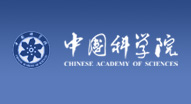报告题目:Plasmon Enhanced Two-photon Photoluminescence of Metal Nanoparticles and Their Applications
报 告 人: 徐清华 教授 新加坡国立大学化学系/新加坡国立大学苏州研究院
报告时间:9月26日(星期一) 上午10:30
报告地点:理化楼三楼多功能厅
报告人简介:
徐清华,1993、1996 年先后于浙江大学和北京大学获学士与硕士学位。1996年赴美留学,1997、2001年先后于美国芝加哥大学和加州大学伯克利分校获硕士与博士学位,2001-2002、2002-2005年先后在美国斯坦福大学和加州大学圣塔芭芭拉分校从事博士后研究。2005 年加入新加坡国立大学化学系并于2011年获终身教职。研究兴趣主要集中金属纳米和共轭高分子等低维及薄膜材料的非线系光学和电子学性质,动力学基本过程及机理,并进一步开发这些材料在光催化,生物成像,生物传感检测及光动力癌症治疗等方面的应用。目前已在SCI 检索的学术杂志上发表学术论文140余篇,H因子40。
报告摘要:
Noble metal nanoparticles, such as Ag and Au, display unique optical property known as localized surface Plasmon resonance. Plasmon coupling between metal nanoparticles (NPs) can cause local electric field amplification and consequently giant enhancement in various optical responses, which has been widely utilized to develop various applications [1]. Nonlinear optical responses are expected to be significantly enhanced due to their nonlinear dependence on the incident intensity. Our recent studies showed that two-photon photoluminescence (2PPL) of various noble metal NPs, such as Au, Ag and Au@Ag NPs of different sizes and shapes, were enhanced by up to hundreds of times in the colloid solution and five orders of magnitude on the single particle level [2-9]. This aggregation induced 2PPL enhancement phenomenon has been further utilized to develop various two-photon excitation based applications, such as two-photon sensing [4-6], two-photon bio-imaging and phototherapy [7]. Single particle spectroscopy and ultrafast spectroscopy have been utilized to investigate the underlying enhancement mechanisms [8-9].
Reference:
1. L Polavarapu, J. Pérez-Juste, Q.H. Xu, L.M. Liz-Marzán, J. Mater. Chem. C, 2014, 2, 7460.
2. Z.P. Guan, L. Polavarapu, Q.-H. Xu, Langmuir, 2010, 26, 18020.
3. P. Yuan, R. Ma, N. Gao, M. Garai, Q.H. Xu, Nanoscale 7 (2015), 10233.
4. P.Y. Yuan, R.Z. Ma, Z.P. Guan, N.Y. Gao, and Q.-H. Xu, ACS Appl. Mater. Interf., 2014, 6, 13149.
5. C.F. Jiang, Z.P. Guan, S.Y.R. Lim, L. Polavarapu, Q.-H. Xu, Nanoscale, 2011, 3, 3316.
6. C.F. Jiang, T.T. Zhao, S. Li, N.Y. Gao, Q.-H. Xu, ACS Appl. Mater. Interf., 2013, 5, 10853.
7. P. Yuan, X. Ding, Z. Guan, N. Gao, R. Ma, X.F. Jiang, Y.Y. Yang, Q.H. Xu, Adv. Healthcare Mater. 2015, 4, 674.
8. Z.P. Guan, N.Y. Gao, F. Han, Q.-H. Xu, J. Am. Chem. Soc. 2013, 135, 7272.
9. X.-F. Jiang, Y.L. Pan, C.F. Jiang, T.T. Zhao, P.Y. Yuan, T. Venkatesan, and Q.-H. Xu, J. Phys. Chem. Lett. 2013, 4, 1634.




